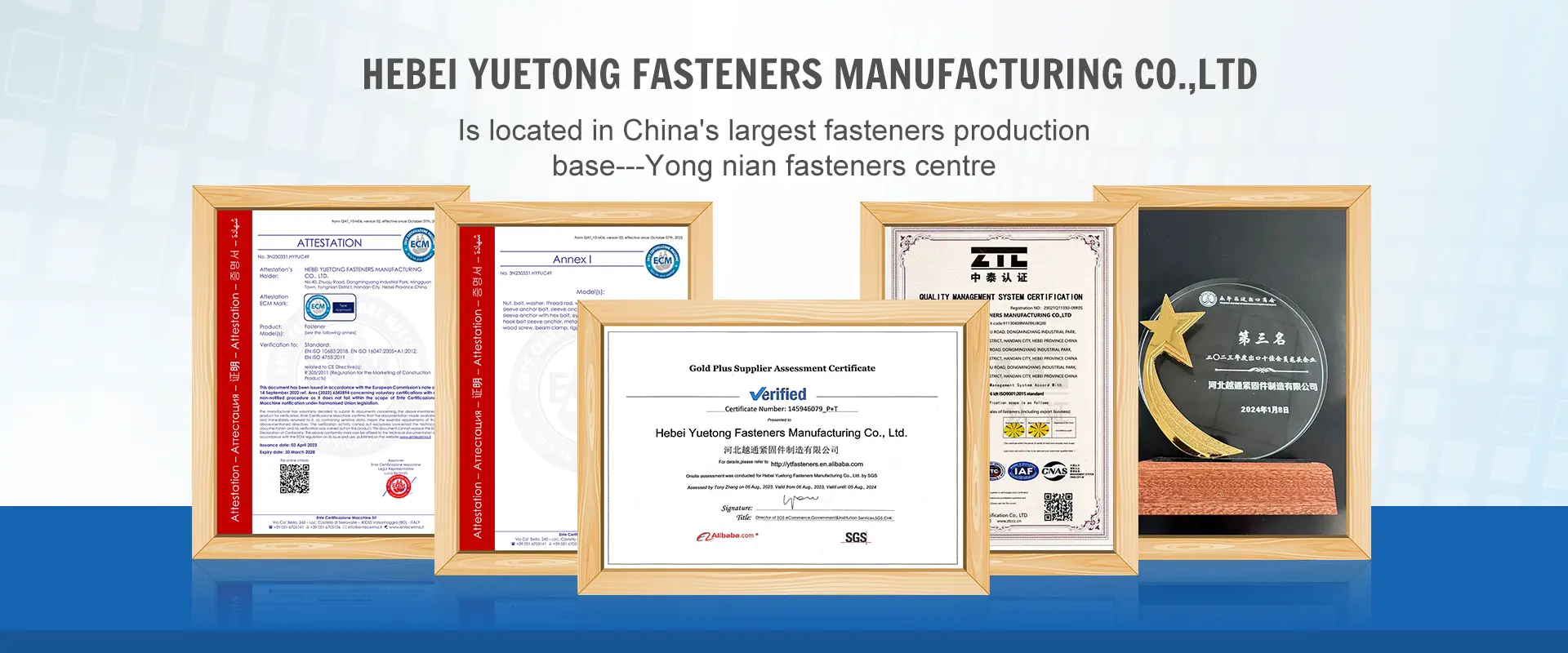Dec . 10, 2024 03:18 Back to list
Innovative Solutions for Anchor Fastener Installation and Fitting Techniques in Construction
Understanding Anchor Fastener Fittings A Comprehensive Overview
Anchor fastener fittings are crucial components in various construction and manufacturing applications. They provide stability, safety, and reliability to structures and assemblies, essential for ensuring long-lasting performance. This article delves into the types, applications, benefits, and installation techniques of anchor fastener fittings, helping you understand their significance in engineering and construction.
What Are Anchor Fastener Fittings?
Anchor fastener fittings are mechanical devices used to secure various objects to a base material, commonly concrete, masonry, or structural steel. These fittings provide the necessary strength to withstand tensile, shear, and compressive forces, making them integral to many structural applications. The primary purpose of an anchor fastener is to create a stable connection that can endure external loads, environmental factors, and dynamic stresses.
Types of Anchor Fastener Fittings
Anchor fasteners come in various types, each designed for specific applications
1. Expansion Anchors These are commonly used in concrete and masonry. When installed, they expand against the walls of the hole drilled into the substrate, providing a secure grip. Expansion anchors are ideal for heavy loads and are often used for mounting shelves, brackets, and large fixtures.
2. Sleeve Anchors These are versatile fittings that work well in both solid and hollow materials. A sleeve anchor consists of a bolt encased in a sleeve. When tightened, the sleeve expands against the walls of the hole, securing it within the substrate. Sleeve anchors are widely used for attaching equipment, fixtures, and posts.
3. Toggle Bolts Designed for use in hollow walls, toggle bolts feature a spring-loaded wing that opens up inside the wall after being inserted. This design allows them to support significant weight, making them perfect for heavy mirrors, shelving, and other wall-mounted items.
4. Chemical Anchors These involve the use of a resin or adhesive to bond the anchor bolt to the substrate. Chemical anchors are particularly beneficial in situations where traditional mechanical anchors may not provide adequate holding strength, such as in cracked or weakened concrete.
Applications of Anchor Fastener Fittings
Anchor fastener fittings are utilized in a wide range of applications across various industries
- Construction Fasteners are essential for securing beams, columns, and walls, ensuring structural integrity. - Automotive In car manufacturing, anchor fittings secure heavy components such as engines and paneling.
- Furniture Making Many furniture items use anchors to ensure joints remain solid, especially in items requiring disassembly and reassembly.
- Aerospace Anchor fittings are crucial in assembling aircraft components, providing stringent safety and performance standards.
anchor fastener fitting

Benefits of Anchor Fastener Fittings
Using anchor fastener fittings offers several advantages
1. Strength and Stability Anchor fittings are designed to withstand significant forces, ensuring that structures remain stable throughout their lifespan.
2. Versatility With various types available, anchor fasteners can be used in diverse materials and applications, making them suitable for almost any project.
3. Ease of Installation Many types of anchor fittings are easy to install, requiring minimal tools and expertise, which can lead to reduced labor costs.
4. Durability Made from robust materials, anchor fasteners are resistant to corrosion, wear, and environmental degradation, ensuring long-term reliability.
Installation Techniques
Proper installation of anchor fastener fittings is critical to their performance. Here are some general steps to follow
1. Select the Right Type Determine the load requirements and the base material to choose the appropriate anchor fastener. 2. Drill the Hole Use the correct drill bit to make a hole. Ensure it's clean and free of debris.
3. Insert the Anchor For expansion and sleeve anchors, insert the anchor into the hole. For chemical anchors, mix the resin as per manufacturer's instructions and fill the hole before inserting the anchor.
4. Tighten the Fastener Use the appropriate tool to secure the anchor. Avoid over-tightening, which can damage the substrate or the anchor itself.
5. Verify Security Once installed, perform a load test if necessary to ensure the anchor's integrity.
Conclusion
Anchor fastener fittings play a pivotal role in ensuring structural safety and reliability across various fields. By understanding the types, applications, and best practices associated with these components, engineers and constructors can make informed decisions that enhance the durability and effectiveness of their projects. Whether in construction, automotive, or aerospace, the correct application of anchor fastener fittings guarantees a robust foundation for demanding tasks.


